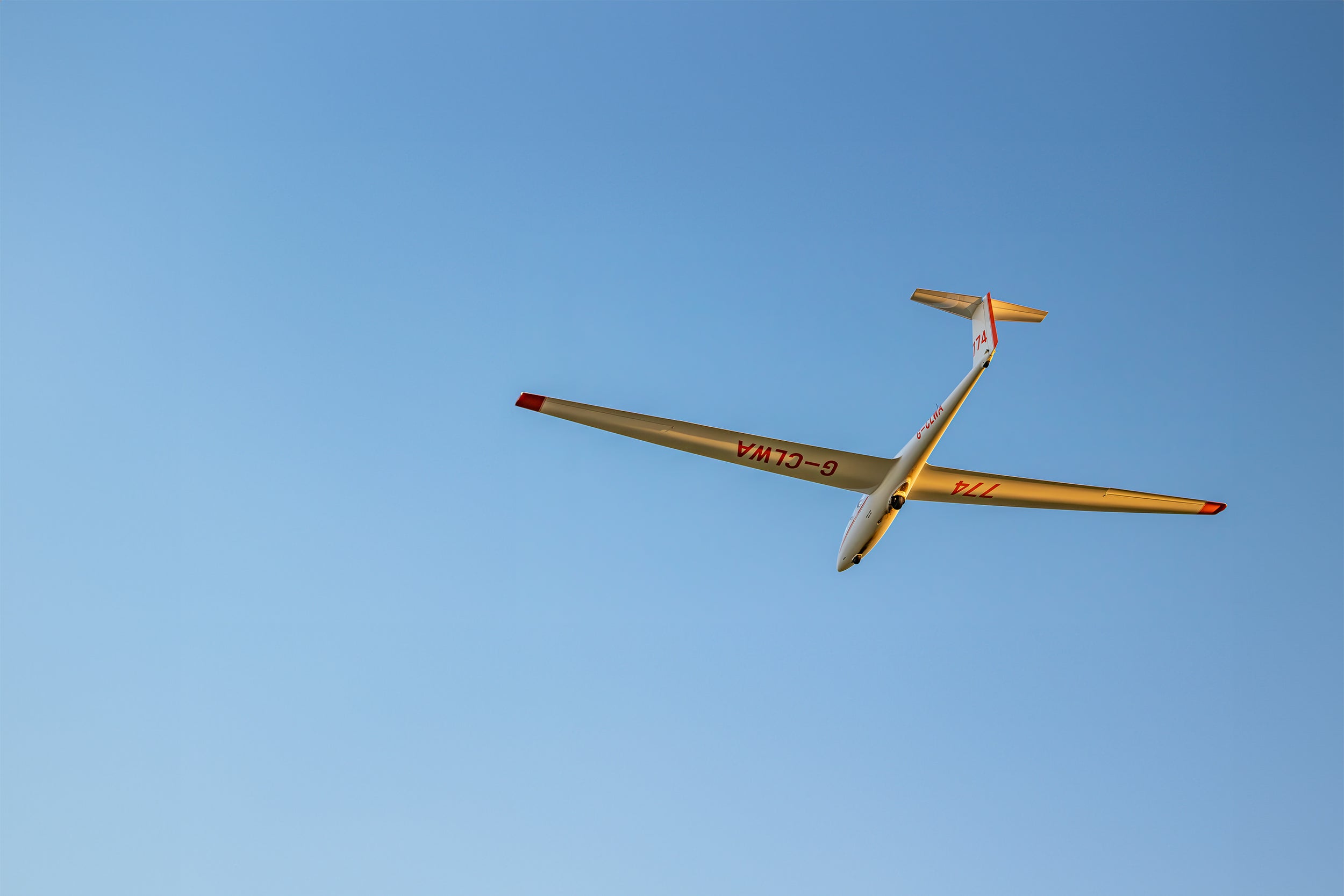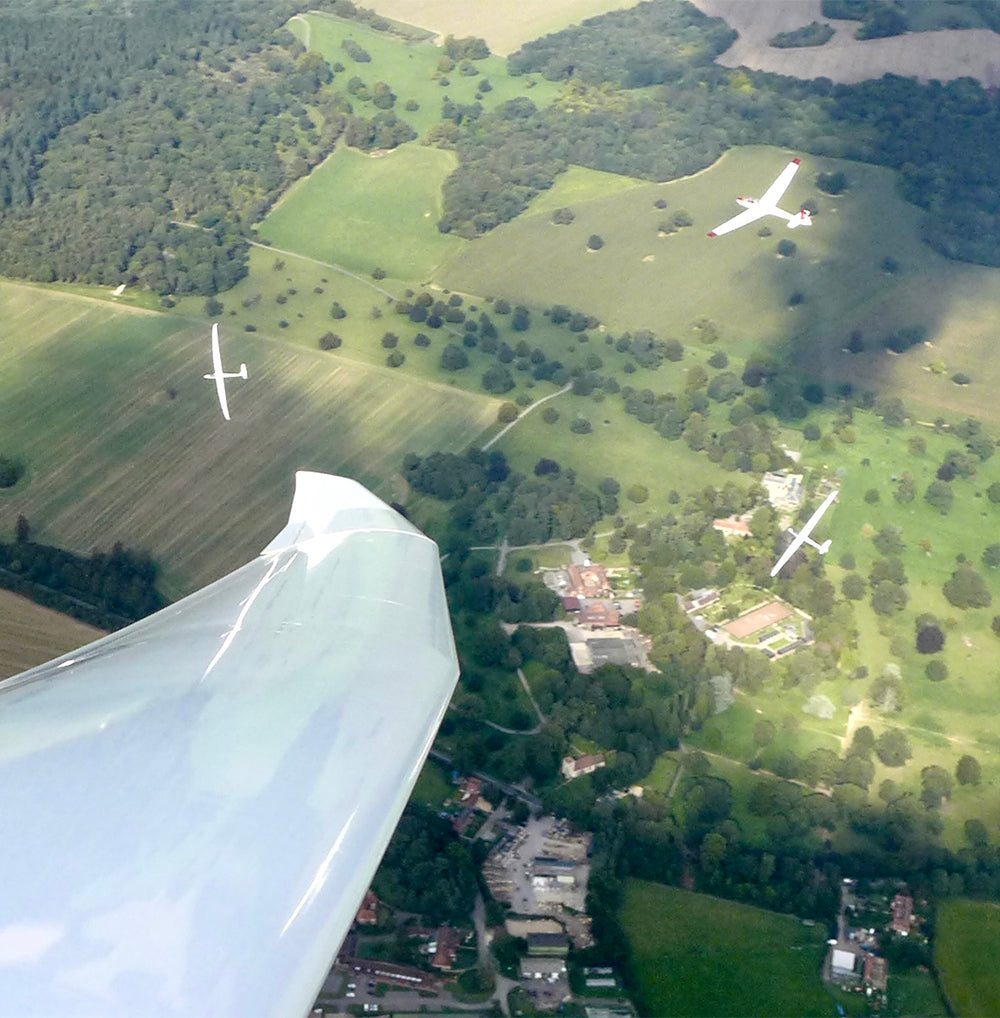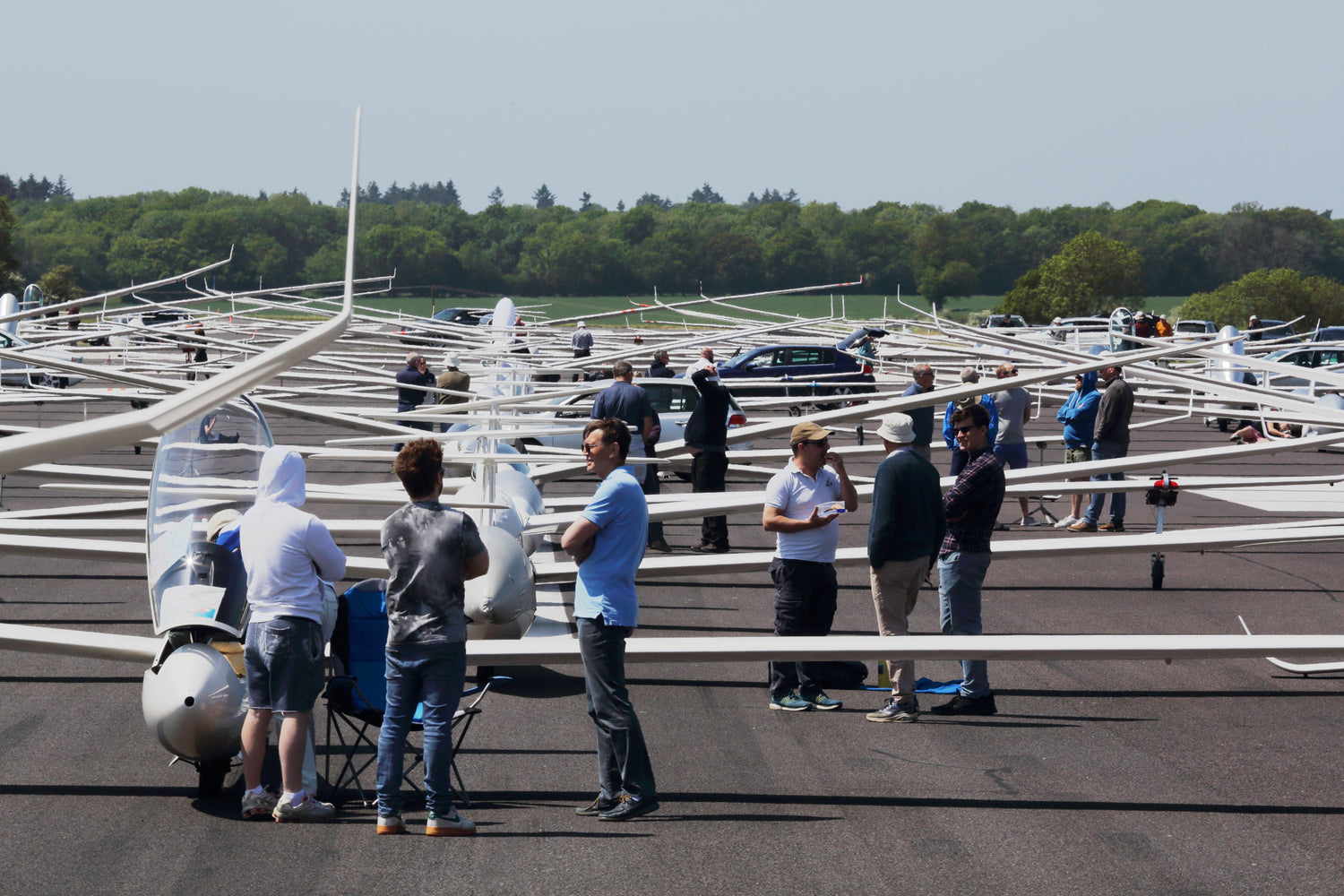
How gliders fly
Gliders are engine-less aircraft, with long wings and a sleek profile, enabling them to glide efficiently through the air. They rely on being towed off the ground, but once airborne, gliders can stay up for hours and travel hundreds of miles.
How gliders launch
At Lasham, we have two different launch methods available:
-

Winch
Winch launching utilizes a ground-based winch to rapidly lift the glider off the ground. The glider accelerates and takes off in about 3 seconds, followed by a 45-degree climb. While the exact height achieved depends on many conditions, Lasham is certified to winch launch gliders to 3000ft above the ground.
-

Aerotow
Aerotowing employes a "tug" aircraft to tow a glider into the air. Whilst more gradual than a winch launch, the towplane can take the glider higher and position it anywhere in the sky. A skilled tug pilot will take the pilot directly into rising air, so they can easily continue their flight after the tow.
How gliders stay airborne
Gliders stay airborne by cruising in naturally occuring areas of rising air, the same used by soaring birds. In flat regions like Lasham, this primarily involves "thermal" lift, while in mountainous areas, this extends to "ridge" or "hill" lift, as well as "wave" lift.

Thermals
Thermals form when the sun heats up a patch of ground, warming the surrounding air and releasing a "bubble" of warm rising air. On favorable days, thermals can rise until reaching the condensation level, forming small clouds known as cumulus. Glider pilots identify these clouds, anticipating a thermal underneath. Entering a thermal, the pilot turns in tight circles, keeping the glider within the thermal and causing it to climb.

Flying cross-country
Once at the desired height, pilots embark on cross-country routes, slightly deviating towards thermals. Modern gliders usually have a glide ratio of at least 30 to 1. If the glider is at 4000ft, this translates to a potential glide distance of over 20 miles. To undertake a long cross-country flight, the pilot will spend as much time as possible cruising while stopping in thermals to "top-up" their height.
Safety
Just like in commercial aviation, safety remains the top priority in gliding. In general, we always maintain a reserve of height to ensure a safe landing, even if conditions prevent us from returning to our home airfield. Our comprehensive training programme equips you to fly safely in various conditions.

Join us and start now!
Most people join Lasham after completing either a trial lesson or learn to glide course. Trial Lessons include 30 days membership, while courses include 3 months membership.
More information about membership available here:
Fly with us
-
Glider trial lesson
Regular price £140.00Regular priceUnit price / per -
Glider flying start
Regular price £245.00Regular priceUnit price / per -
Learn to glide course
Regular price From £990.00Regular priceUnit price / per





